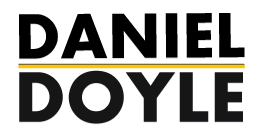What Web Projects Can Learn From Film Production
Meticulous planning leads to smoother execution.
There’s a bit of both art and philosophy when preparing a film project; a director has to have a creative vision and a great story to start. But a great idea isn’t enough to get a film made – the production is a major ordeal full of minute details and huge obstacles that all need to be overcome before the final screening.
So here are a few principles I think worthy of carrying over from film production to web production:
Pre-production is key.
Plan, plan, plan and prepare. You can’t be over prepared. Should I say it again? Unless you are making a certain type of documentary, there are some basic issues that have to be addressed. What are you putting in front of the camera? You can’t just grab a camera and say “Let’s make a movie!” It starts with a script. Then the production goes through major planning. You have to bring on people with expertise in various areas with clearly defined tasks and clearly defined outcomes. The Location Manager isn’t worrying about what kind of lights are needed or what actors need to be on set. The Cinematographer isn’t thinking about what everyone is going to eat for lunch. Each person on a film crew knows why they are there and what is expected of them.
Someone has to be in charge.
Nothing kills a film set like a crew who is getting orders from several different people. Contradiction causes chaos. There is a clear chain of command and things work best when everyone knows who’s responsible for what.
Collaboration is essential.
While not everyone is sitting in on meetings. all the key players are involved every step of the way throughout the process. Scripts and other documents highlight changes and act as the production ‘bible’ so everyone knows what the project is about.
Details, details, details.
Nothing is in front of the camera by accident. Every prop, every wardrobe, every actor, every nuance of a location are planned for. Decisions are not random. The prop is in the script for scene X. The First AD marks it when lining the script. The props department knows what scene is being shot and what props are in that scene. Not only are they planned for, but in the best movies, there is a reason for every choice.
Communicate or die.
With so many departments and so many details, communicating what, where, when, how and why are vital; and everyone knows how changes are tracked. Even with the script, revisions are marked by the changing of the paper colours. Everyone has to be kept in the loop or you could end up with half the crew at the wrong location on the wrong day because they missed the latest update.
Role with the punches.
Nothing goes according to plan. Preparing for the unknown is one of the most difficult things. Being prepared doesn’t mean you are not flexible enough to change and adapt.
Don’t try and save it in post production.
I’ve heard that so many times….we’ll get it in post. Don’t put off today and hope you can save yourself from the fire later. Later always comes sooner than expected.
Production is no time for debate.
The reason for good pre-production is to get all of the discussions and decision making out of the way. Production needs to run like a well-oiled machine. Nothing stalls a production faster than questions about why or how something should be done. Obviously rolling with the punches means you may need to solve things in a different way than you anticipated, but major structural changes should be avoided as much as possible. This is especially true in a Waterfall development environment. Film production is like Waterfall in that each stage cannot be completed until the one before it is complete, and is a bit like Agile in that things are done out of sequence and often within contained units. Some editing can be done while shooting is still in progress. However, in the middle of production is no place to have major re-writes to the script.
Get In Touch
Let me know a bit about you and your project.
